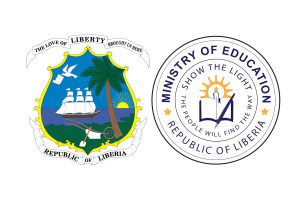
INTRODUCTION
As the world starts to rebuild and recover from the unprecedented disruption of the global COVID-19 pandemic, which swept the world in 2020, the development of Liberia’s Education Sector Plan (ESP) (2022/23–2026/27) is timely. From the crisis, new opportunities have emerged for reimagining education, rethinking old assumptions, and confronting embedded dysfunctionalities and persistent bottlenecks.
This also presented an opportunity to ask and answer the hard questions that will reboot the system back into action, not in the same form as before, but into a better-functioning, more highly evolved version. The radical disruption of the COVID-19 period, when schools in Liberia were closed for six months, has provided pause for taking stock of the distortions of the current inequities and inefficiencies in the system, which have evolved over an extended period of time, subsequently become entrenched, and continue to severely constrain learning outcomes. In line with many other countries, Liberia has used this hiatus to rethink radical solutions to old problems that are critically needed to create a well-functioning system that delivers quality education for all. While aspects of the previous ESP, Getting to Best (2017–2021), remain unfinished and were interrupted by the pandemic, a new story is emerging in the recovery from the COVID-19 crisis. The findings of the new Education Sector Analysis (ESA) (2021) point to new understandings of old problems and reveal new challenges, innovations, and opportunities. Thus, the new ESP presents an opportunity to break with ‘business as usual’ and seize the moment to reset the education system so that it is fit for purpose in the post-pandemic, rapidly changing broader global environment, where social, economic, and climate-related challenges all require education- related solutions. The ESP is also being completed against the backdrop of the United Nations’ global Transforming Education Summit (TES), to be convened at the 77th UN General Assembly meeting in September 2022 as an opportunity to ‘mobilize political ambition, action, solutions and solidarity to transform education: to take stock of efforts to recover pandemic-related learning losses; to reimagine education systems for the world of today and tomorrow; and to revitalize national and global efforts to achieve SDG-4’1.
The ESP represents a solid platform from which Liberia can distil its National Statement of Commitment to be presented at this forum, which outlines the country’s vision and concrete transformative actions to further drive progress towards achieving the Sustainable Development Goals and better prepare learners for the challenges of the future. At the same time, the ESP remains a living document, which can be further honed to reflect global lessons shared at the Summit by other countries similarly striving to transform their education systems for transformative impacts on students’ learning and life prospects.
In Liberia, as highlighted in Chapter 1, too many children still remain out of school, especially the poorest girls and boys in underserved areas, with their rights to a quality education unrealized and their potential unfulfilled. Of children who are in school, the vast majority are over-age for their grade, which limits the effectiveness of their learning and acquisition of skills, especially when the learning environment is unsafe, unhealthy, and unprotective. The over-age issue starts at the early childhood education (ECE) level, with knock-on effects that then filter all the way up the system, negatively impacting both internal efficiency in the Ministry of Education (MoE) and lowering returns on investment at the household level.
Having disparate age ranges in the same class also puts tremendous pressure on teachers to teach effectively, and many of them are untrained and lack adequate teaching and learning materials (TLMs). Working conditions in remote areas are challenging, which is a major deterrent for teachers’ willingness to be deployed there and a further constraint on the effectiveness of students’ learning. Combined, these factors have created a vast pool of untapped human capital potential that, if effectively harnessed, could unleash individual creativity and propel dynamic national development. The critical task of this ESP is therefore to bring more children, especially those from poorer, underserved areas, into the education system at the right age; ensure they progress through and complete school on time and in a healthy, safe, and protective environment; and leave school with the foundational and 21st-century skills they need to contribute to and benefit from national development.
Achieving this task requires a long-term commitment to breaking old patterns of late- and non- enrollment, especially of the poorest rural children, and to elevating the quality, deployment, and motivation of the teaching force to address associated learning gaps and build the human capital needed to drive the country forward.
This education sector plan , accordingly, commits to take the bold action needed to achieve three overarching goals: (1) to increase equitable access; (2) to improve the quality and relevance of teaching and learning; and (3) to strengthen the efficiency of the system. Drilling down from these goals, as further outlined in Chapter 2, MoE has identified a number of strategic pathways to change, which have the most powerful leveraging potential for achieving the three overarching goals and delivering sustainable and transformational results in the ESP’s five-year period.
| Read / download full document here |
